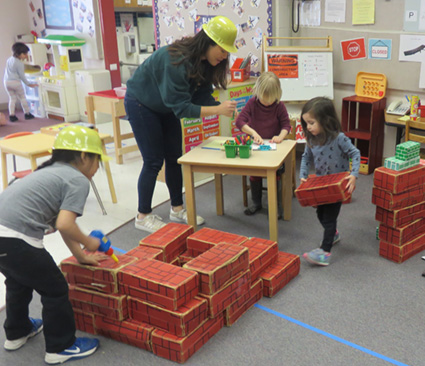Language Acquisition Preschool
 LAP follows the Language-Focused Curriculum, designed to be naturalistic and child-friendly.
LAP follows the Language-Focused Curriculum, designed to be naturalistic and child-friendly.
Daily lessons and classroom activities are centered around a weekly theme. Activities in the LAP classroom are both child-centered and teacher-led. While some activities are routine in nature, others change daily based on the theme of the lesson. Dramatic play activities are a foundational piece of the LAP curriculum because they naturally facilitate language learning, emergent literacy skills, and social interaction.
The Principles of the Language-Focused Curriculum
- The curriculum should enable all preschool children to benefit from activities to enhance their language acquisition; children with better verbal skills are better prepared for school entry.
- The curriculum should adhere to the principles of children’s language acquisition.
- Many of the time-honored practices for children’s preparation for school entry should be followed, along with developmentally appropriate practice regarding cognitive and social development.
- Care should be taken to educate children with speech and language impairments in a classroom with their typically developing peers in the least restrictive environment.
- Staff should ensure that children with language intervention needs are not separated from the group in ways that highlight their limitations; therefore, children should not be identified for individual therapy sessions outside of the room.
- Parental involvement should be recognized as an important component of any efforts to develop children’s language, social, and cognitive skills.
The Preschool Curriculum Books
- Building a Language-Focused Curriculum for the Preschool Classroom, Volume I: A Foundation for Lifelong Communication (1995) edited by Mabel Rice and Kim Wilcox
- Building a Language-Focused Curriculum for the Preschool Classroom, Volume II: A Planning Guide (1995) by Betty Bunce
- Early Literacy in Action: The Language Focused Curriculum (2008) by Betty Bunce